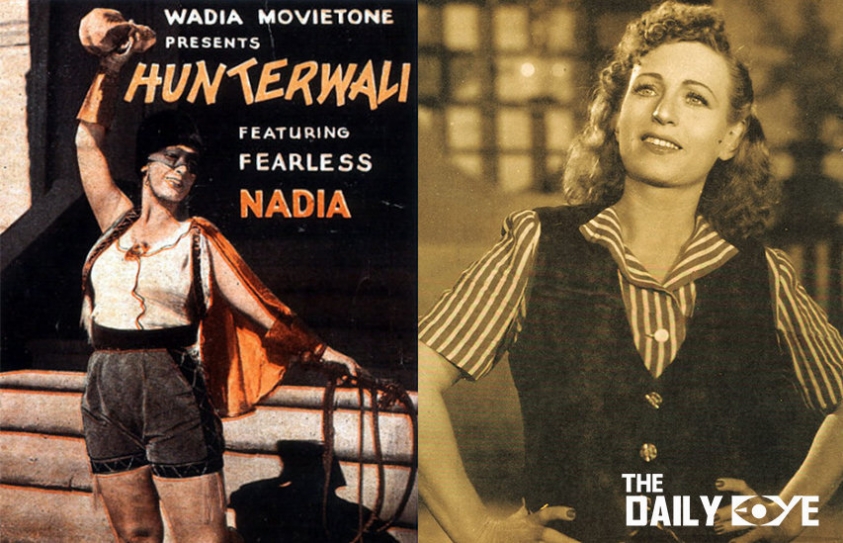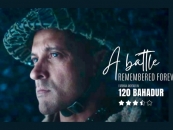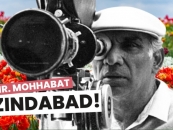
In Honour of Fearless Nadia
by Yash Saboo January 15 2018, 3:00 pm Estimated Reading Time: 3 mins, 28 secsThe year was late 1930s. The world saw the emerging of fictional superheroes and cinema was entering the fantasy world. The names of the caped crusaders who emerged in this era — Superman (debuted in 1938), Batman (debuted in 1939), and Wonder Woman (debuted in 1941) — have become legends and are still with us today.
It was at this time in India that a superhero in India burst onto the screen, first as a princess, then as a masked vigilante, juggling whips, swords, guns, and even pummelling villains with her bare hands. She could jump off cliffs, engage in combat on a running train, swing from sparkling chandeliers, befriend lions, and whenever needed, she could land mean punches and kicks on men, at times, several, all at once. And her debut as a princess appeared as if she had the blessing of the Greek goddess Aphrodite. We are talking about none other than Fearless Nadia.
Fearless Nadia was born Mary Evans in Perth, Australia. She accompanied her family to India as a child. She began working in the circus in the early 1930s, where she took the name, Fearless Nadia. The tall, blue-eyed, blonde began her film career several years later in Hindi language films in India.
From a young age, she wanted to be a singer and dancer and learned Scottish dances from her father and Greek songs from her mother. She went on to sing in church choirs in school but even as a young girl, she was different. While her classmates played with fluffy soft toys, she spent most of her time with a pony that became her best friend. She also spent time learning fishing, hunting, horse riding and everything normally considered audacious for girls of her age at the time.
Nadia, later, toured India as a theatre artist. It was around this time that she caught the eye of filmmaker JBH Wadia. He gave her a small role as a slave girl in Desh Deepak and then as Princess Parizaad in Noor-E-Yaman, which proved to be a huge hit with the audience.
Nadia's first feature-length film, Hunterwali was a huge gamble for JBH Wadia and his brother Homi Wadia. Not only did the film cost around Rs 80,000 - a huge sum for a local film at that time, the Wadia brothers could not find distributors for the film and ended up doing the job themselves.
Over the next decade, Nadia went on to star in over 50 films, performing her own stunts in every single one of them. From swinging from the chandelier and jumping off cliffs to fighting atop a speeding train and befriending lions, she did it all with an ease even men found difficult to achieve. Her fierce yell at wild animals, bandits, and bad boys in general, as she cycled down the road on her way to new adventures, became her signature.
She also risked her life in the line of duty a number of times. Once, while shooting for a fight scene, she fell flat on her face from a great height and another time, she almost got swept away in powerful currents of Bhandardara Falls in Maharashtra.
At a time when Indian women were slowly warming up to the idea of acting as a profession, Nadia also emerged a feminist icon, challenging male dominance with rousing lines such as: “Don’t be under the assumption that you can lord over today’s women. If the nation is to be free, women have to be freed first.”
She appeared in over 50 films in India. Some of her best films include Khilari, Ek Nanhi Munni Ladki Thi, Hurricane Hansa, Miss Frontier Mail, Lady Robinhood, Sher-E-Baghdad, Himmatwali, Stunt Queen, Toofani Tirandaz, Jungle Queen, Carnival Queen and Circus Ki Sundari. She married her long-time producer-director Homi Wadia in the early 1960s and retired from films.
January 8th 2018 was Fearless Nadia’s 110th birthday and Google also made a doodle in her honour. She is still an inspiration and her story stands enlightening at a time when gender equality is still a struggle for many women artists in the Bollywood and Hollywood industries.





-173X130.jpg)
-173X130.jpg)
-173X130.jpg)


-173X130.jpg)
